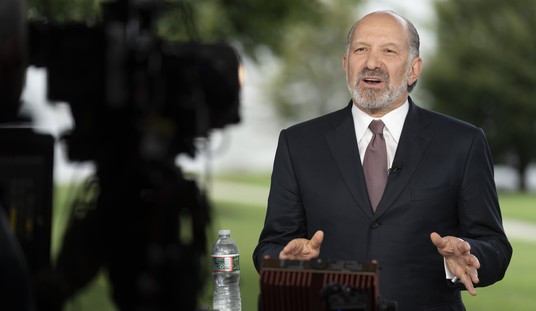Recently, HarperCollins, a traditional big publishing house, announced they intended to take a very non-traditional step: they were going to stop paying authors advances on books in a new imprint, citing changes in the publishing business.
Authors pretty uniformly responded by saying under their breath “what changes? The publishers have always wanted to avoid paying the authors.” More openly, some authors responded by asking what publishers were good for in the new world of the Internet.
It’s a good question. And so as to not keep you on tenterhooks, the short answer is “not much.” I already discussed this in a recent piece on PJM about the music industry, but the book and the magazine publishing industry are structurally similar to record publishing: the business model is driven, first and foremost, by the costs of producing the physical realization on which the content comes. In the record business, it was those large rotating media — first cylinders, then lacquer, then vinyl, and finally the CDs and DVDs. In the publishing business, it’s the paper newspapers, glossy paper magazines, and the lovely big books. The ones trying to crowd me out of a two-bedroom apartment. But that’s another story.
Without beating it to death — go back and read the music industry piece if you want to read me beat it to death — the old-fashioned way of publishing means that the manuscript for the book had to be translated into physical printing plates, and these plates had to be used to print physical pages which were bound and distributed. For most of the last hundred years, this was largely done with Linotype machines, lovely old things that literally cast a lead “slug” of type for each line of text on the page. These “lines o’ type” were assembled into frames for each page, the frames were put into printing presses, and thousands of pages were printed, assembled, and bound. Then the bound books had to be transported to bookstores, promoted, and sold.
Setting this up is expensive: Linotype machines aren’t cheap, printing presses that can print thousands of pages an hour aren’t cheap, and once you have the presses, the time you spend putting the new type into them for a new set of pages is definitely not cheap. Nor were the printing and shipping. Once your printing is done, you have massive frames of type to store — and we’re talking thousands of pounds of lead alloy and steel fixtures.
Since setting them up was so expensive and reprinting was very nearly as expensive as the first printing, it only made sense to print when you could print a lot of copies; but then these copies had to be shipped or stored, and each one of them added some to that cost as well. If they didn’t sell, they had to be disposed of; neither warehouse space nor disposal were cheap either.
What this means is that for a book to have a chance of making a profit at a reasonable price, you have to sell a lot of them in order to spread the large fixed costs across many copies. Again, this is completely analogous to the record industry. So you need a filter: someone has to decide what to publish, and has to make those decisions based on how many copies they expect to be able to sell. Those people are called “editors,” and their job is to read all the incoming material, decide what is going to have the best chance of selling, and then determine how to promote each item in order to maximize the sales.
So, as it always does, time passed and things changed. The old-fashioned “hot type” Linotype was replaced with photo-composition and photo-offset printing, and now instead of massive frames full of lead type, printing presses used “plates” of thick foil that were easier to change and easier to store. Now it was possible to make smaller print runs and reprint more often.
Then along comes the laser printer, and it became possible to print pages with nearly the quality of typeset print on a machine that sits on the desk and costs a couple of hundred dollars. Other changes in technology have combined with improvements in printing so that “print on demand” is possible. In fact, small print-on-demand machines will be available which can print a book and bind it in a matter of minutes.
For, at least, those old-fashioned people who want a bound book. In a transition that has just gotten started, “electronic paper” is making devices like the Kindle possible; the printing press is completely out of the equation.
Which means the whole business model of “publishing” is gone. Let’s just compare:
| Old model | New Model |
|---|---|
| Author writes content | Author writes content |
| Content chosen by editors | ? |
| Type set or cast by hand | Manuscript translated to type by machine |
| Type installed in press | No need |
| Thousands of pages printed | One copy printed |
| Thousands of copies bound | One copy bound |
| Thousands of copies shipped | Bound copy mailed or delivered to buyer |
| Book tours, advertising, promotion, PR by editorial staff | ? |
| Unsold copies returned | No unsold copies |
| Remaining print run stored | Printable form stored on computer |
| Unsold books disposed of | No need |
Just as with music, this means that an author can now get work to the public without needing a conventional publisher at all; print-on-demand publishers like iUniverse and LuLu make it possible for an author to produce a book and sell it himself.
This can be somewhat of a good deal for an author writing fiction or labor-of-love books on obscure subjects. It’s no longer necessary to be able to sell enough copies to pay for expensive professional typesetting and production, so the barriers to entry are down: anyone who can write fifty thousand words can publish a professional-looking book. Which then sells dozens of copies. Whether it’s any good or not.
But what then? Unlike the music business, where someone can perform a new track in minutes and produce a final, publishable track in hours, it still takes a long time to write a book. (A long, long time. Such a long, long time. But I digress.) For that to be anything but a hobby, books need to sell thousands of copies.
Self-publishing isn’t new; it’s just much cheaper and easier than it was before. Self-published books have gone on to become best-selling, through word of mouth — which usually translates to “incessant self-promotion by the author.” Not everyone is good at self-promotion; publicity, promotion, and selling are vastly different skills from writing.
On the other side of the sale, we the book-buying public are presented with another problem: there are going to be a lot of books out there, just like there are a lot of blogs now. How do we know which ones are good? Every science-fiction reader knows this problem already — SF used to be a dozen paperbacks at the bottom of the shelf, and you could read nearly everything that got published. Now it occupies whole sections of big bookstores, and it can be pretty tough to find the dozen or so really good books hidden among them.
It used to be that there was a filter — someone, a professional reader, had chosen a manuscript and put up the money to print it, so you had some reason to think it might well be worth buying.
It’s a pretty problem: on the one hand, authors find themselves ready and able to publish, and much more easily than ever before; on the other, the books readers want are hidden in the mass of easily published books. Wouldn’t it be nice if there were some way for readers to know what books will suit them, and for writers to have someone to promote their books? Just like editors used to do?
That’s the answer, of course. Of all the steps in the publishing business, both old and new, the holes are at the “choose content” and “promote content” steps. And there are a whole group of people, namely editors, who know how to do that.
Where there’s a hole, there’s a business model. The logic of the situation says that in publishing, it’s the editors — and their counterparts, the writers’ agents — that have the opportunity. Someone who will choose the best content, publicize it, promote it. This new business model is someone who chooses content, promotes it at their own expense, and in return gets a share of the author’s proceeds, so the job in some ways looks more like an agent than an editor — but it’s an agent with an editorial staff to do promotion.
These editor/agents, some of them at least, will become celebrities in their own right, as Judith Regan did. Others will let their advertising and promotion budgets — and their authors — speak for themselves. But someone who can turn a few thousand sales into a hundred thousand will be worth a lot to authors, and where there’s money to be made you can bet someone will come along to make it.
Charlie Martin is a Colorado computer scientist and nearly-successful screenwriter who contributes to the Flares Into Darkness political blog as ‘Seneca the Younger,’ and blogs under his own name at the aggressively non-political Explorations blog.










Join the conversation as a VIP Member